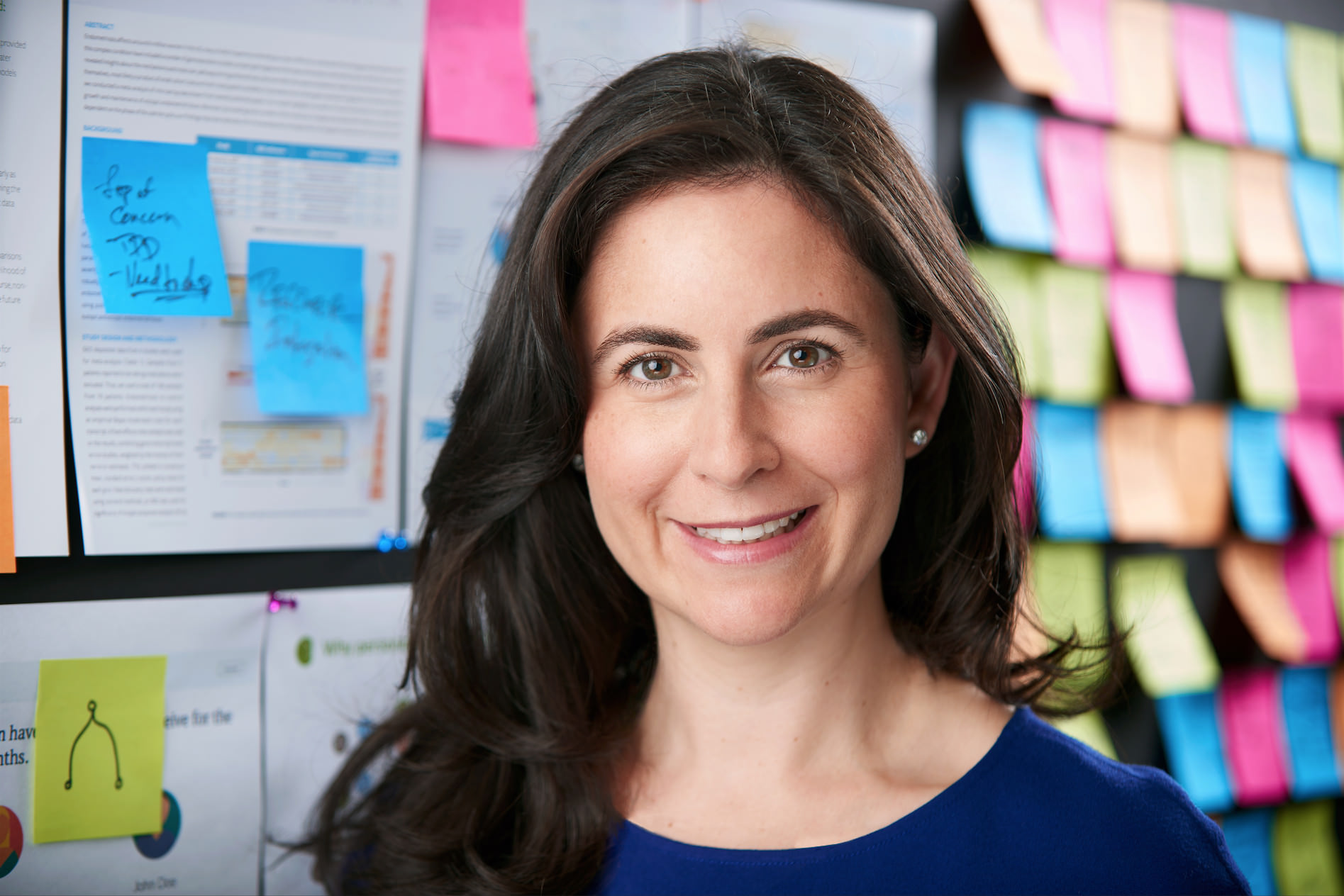My Endometriosis Journey: Taking Control
As a scientist working in the reproductive health space, Dr. Piraye Yurttas Beim was aware of endometriosis. But like many women with the condition, she had grown up believing the pain she experienced during her period was normal. "I grew up thinking I was a pain wimp, but it turns out I was a pain champion."

It wasn’t until she began to start building her own family that she received a diagnosis of endometriosis. Interestingly, two years prior to her diagnosis, Piraye founded Celmatix, a next-generation women’s health company that leverages genomics to help women and their physicians make more informed, proactive reproductive health decisions. Using her company’s technology coupled with her diagnosis, Piraye could closely analyze her own health in the context of her endometriosis diagnosis and overcome her fertility problems to start the family she wanted.
Before receiving your endometriosis diagnosis, what symptoms and signs were present that suggested you may have had the disease?
Since my first period, I experienced debilitating pain with each menstrual cycle. There were days I couldn’t get out of bed and over-the-counter pain medication did not help. I had been told by the women in my family, including my grandmother, that this was simply a normal part of being a woman. Looking back and understanding what I now know about the genetic factors that can lead to endometriosis, it is likely that endometriosis runs in my family. I’m grateful to have come of age in a time where the stigma surrounding reproductive health was starting to be challenged and that endometriosis is something more and more people – especially doctors – are starting to understand and discuss more freely. My grandmother’s generation didn’t have that same opportunity. I grew up thinking I was a pain “wimp”, but it turns out I was a pain champion.
When you were diagnosed with endometriosis? What treatments or procedures did you try to relieve your symptoms?
I was told at 32 that my symptoms were likely because of endometriosis. I didn’t take action, however, until I tested positive for some of the highest genetic risk factor markers for endometriosis after taking a Fertilome genetic test, which was developed by my company, Celmatix. I’m fortunate to have identified an excellent surgeon, and laparoscopy combined with acupuncture, diet, and lifestyle changes have really helped me manage my symptoms.
The genetic endometriosis markers that I inherited from my family make my body more sensitive to inflammation. I try to keep stress under control and am disciplined about eating foods such as leafy green vegetables that reduce inflammation. I also try to avoid sugar and processed foods. I have found that going to an acupuncture practitioner who understands endometriosis has been impactful for me. I know that my body responds to the choices that I make.
When you were diagnosed with endometriosis, did your physician discuss your fertility?
In my case, my fertility is what brought me into the doctor’s office in the first place. That said, even for women who aren’t actively trying to get pregnant, fertility is an important part of the conversation. About half of women with endometriosis struggle with fertility difficulties and knowing that can certainly be troubling. But worse still is being blindsided by fertility issues down the road. It’s a personal decision whether to find out if you have a risk factor, but I believe knowledge is power. Part of the mission at Celmatix is empowering women with information about their health and fertility before they miss out on all the options available to them to build the family and future they want. Our hope is that this encourages more open and proactive dialogue between women and their doctors.
What steps did you take to ensure you could build the family you wanted?
One of the big misconceptions around endometriosis is that you won’t be able to get pregnant, which is just not true. For many women, as in my case, it is possible to conceive naturally. It might take a bit longer and be a harder journey, but most women with endometriosis are able to have children. For me, I believe diet, lifestyle changes, and acupuncture really made a difference. As a scientist, I’m reluctant to try to quantify the impact of these changes or say with any certainty that they made my pregnancies possible. But, knowing my body, I felt different after making these changes and that is when I finally conceived my first child. Pregnancy and breastfeeding can help with disease regression in many women, at least for a period of time. I found it much easier to conceive my second and third child.
How do you manage your symptoms now?
One of the challenges of living with endometriosis is that there is currently no cure. Even in the care of the most skilled surgeon, recurrence is possible. I do have occasional flare-ups of my symptoms, but even those flare-ups are manageable now with over-the-counter pain medication. Someday, I may need to undergo another surgery. But for now, I’m incredibly grateful to be in a place where my symptoms are manageable and I’m mostly able to live my life fully. I am also a lot more forgiving of myself. I know that around my period I am going to feel tired so I proactively plan ahead to have a lighter schedule and reduce stress. I also time my acupuncture and am extra disciplined about my diet and avoiding alcohol in the lead up to my period. I keep exercise light around my period and try to get extra sleep. I find that using the Flo app is very helpful for timing these efforts around work and life commitments. My family is also an important part of my support network.
